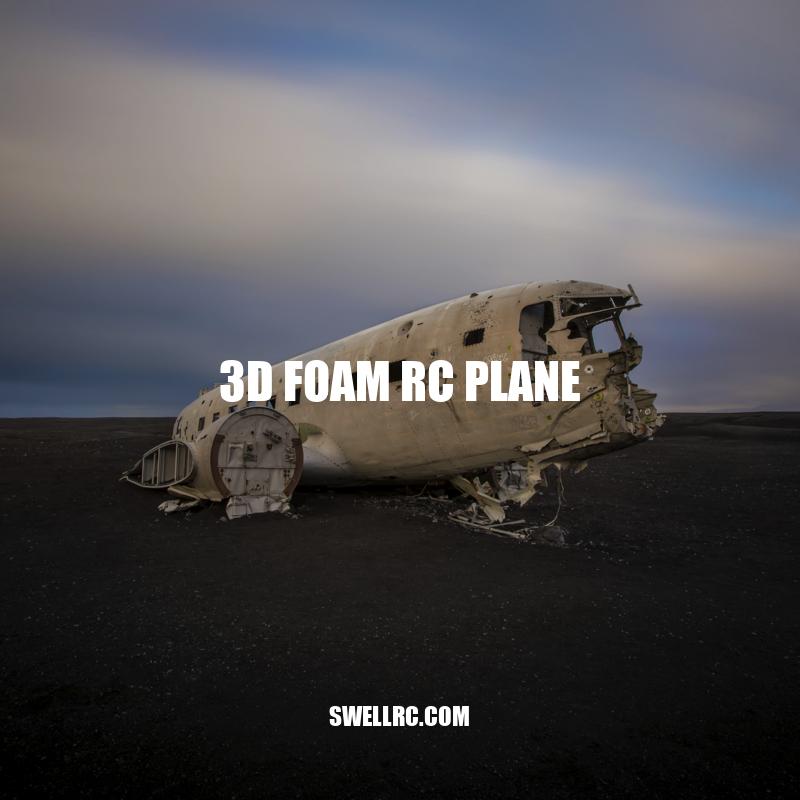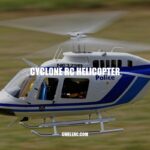Mastering 3D Foam RC Planes: The Ultimate Guide
3D foam RC planes are becoming increasingly popular in the world of hobbyist aviation. These planes are made from foam material, which is lightweight, durable, and affordable. The use of foam in construction makes these planes easy to maneuver and fly, providing a great experience for pilots of all skill levels. There are different types of 3D foam RC planes available, designed for various purposes, from freestyle to precision flying. Building and flying these planes can be an enjoyable and rewarding experience, whether for personal hobby or competition use. Furthermore, technological advancements have improved the design and capabilities of these planes and will continue to shape the future of RC aviation.
Benefits of 3D Foam RC Planes
- Lightweight and durable properties of foam enable easy maneuverability and longer flight durations
- Cost-effective to build compared to other plane models.
- An ideal solution for pilots starting in the hobby.
- The foam is easier to work with, which means enthusiasts can prototype and test their designs rapidly.
- 3D foam RC planes also offer better crashes compared to other plane models, and this means that pilots do not have to worry about other safeties.
- A great foundation for enthusiasts to delve into more complex hobby products later on.
What makes 3D foam RC planes a great starting point for pilots new to the hobby?
3D foam RC planes are great for new pilots because they are lightweight, easy to maneuver, and forgiving in crashes.
Types of 3D Foam RC Planes
There are different types of 3D foam RC planes designed for different purposes. Freestyle planes are ideal for acrobatic stunts and tricks, offering greater control and freedom to pilots. Precision planes, also known as IMAC planes, are intended to perform specific aerial moves, such as acrobatic figures and landings. They are even used for Aerobatics competitions. Other types of planes come with anchoring and design optimizations, suitable for enthusiasts of different skill levels.
| Plane Type | Design | Capabilities | Skill Level Required |
|---|---|---|---|
| Freestyle | Lightweight and agile design | Controlled stunts, rolls, and flips | Intermediate to Advanced |
| Precision | Long and narrow design with larger wingspan | Precision landings, rolls, and advanced aerobatics | Advanced to Professional |
What are the different types of 3D foam RC planes and their capabilities?
The different types of 3D foam RC planes include profile planes, fully 3D planes, and sport 3D planes. Profile planes are lighter, smaller, and better suited for indoor flying. Fully 3D planes have greater maneuverability and can perform advanced stunts such as hovering or torque rolls. Sport 3D planes are a balance between profile and fully 3D planes, allowing for basic 3D stunts and also being able to fly in a more traditional manner.
Building and Flying a 3D Foam RC Plane
- Building a 3D foam RC plane requires specific materials and tools, including foam, a cutting tool such as a hot wire cutter or knife, and adhesives such as CA glue or epoxy. You may choose to use a kit which comes with all needed materials, or get your own.
- Designing your plane may require software, such as CAD software, if you want to modify or create a design from scratch.
- Customizing your plane can include adding artwork and decals or choosing a custom color scheme to stand out at competitions.
- When flying the plane, it is important to adjust the weight and balance for optimal performance, takeoff, and landings.
- Performing aerobatic moves takes practice, and it is important to have a good grasp of the controls before attempting any complex moves.
- There are many resources and communities available for hobbyists and enthusiasts, including online forums and social media groups, which can provide tips, advice, and ideas.
What tools and materials are needed to build a 3D foam RC plane?
The tools and materials needed to build a 3D foam RC plane include foam board, hot glue gun, X-acto knife, sandpaper, motor, servos, receiver, transmitter, battery, props, and control rods.
Future of 3D Foam RC Planes
- Advancements in technology and innovation continue to impact the design and capabilities of 3D foam RC planes.
- New materials, such as carbon fiber composites, are being tested to provide even greater strength and durability to the planes, while maintaining their lightweight properties.
- Improvements in software and engineering are leading to increased precision and accuracy in flight, enabling pilots to perform more complex maneuvers and stunts.
- The use of virtual reality and simulation technologies are allowing pilots to practice and train in a safe and controlled environment for more efficient learning.
- With the continued growth of the hobbyist and competition communities, as well as the increasing accessibility of 3D printing technology, the possibilities for the future of 3D foam RC planes are limitless.
- Websites like RC Groups and Flying Giants are popular destinations for hobbyists and enthusiasts to share ideas and knowledge about 3D foam RC planes.
What are some popular websites for hobbyists and enthusiasts to share ideas and knowledge about 3D foam RC planes?
Some popular websites for hobbyists and enthusiasts to share ideas and knowledge about 3D foam RC planes are RCGroups, FliteTest Forum, and RC Universe.
Conclusion
In conclusion, 3D foam RC planes offer an exciting and unique hobby for both enthusiasts and competition pilots. With the lightweight and durable properties of foam, pilots can achieve better maneuverability and longer flight times, leading to an overall enhanced flying experience. The different types of 3D foam RC planes available cater to a wide range of skill levels and flying styles. Although the hobby has been around for many years, advancements in technology continue to push the boundaries of what is possible with these planes. With virtual reality and simulation technologies now being utilized, pilots can practice and train in a safe and controlled environment, making learning more efficient and effective. With the continued growth of the hobbyist and competition communities, and the increasing accessibility of 3D printing technology, the possibilities for the future of 3D foam RC planes are limitless, and we are likely to see significant advancements in the coming years. Overall, 3D foam RC planes offer an exciting pastime for those interested in aviation and creating.



